In deciding between finding enjoyment from the destination versus through the journey- I lean towards savoring the journey. This strength of being a leaner impacts my teaching, coaching, and advising practices as I pursue progress. I came to EPS with a lot of questions about teaching math as I had very limited experience- 1 year of teaching High School and 2 years of teaching during grad school. So, I leaned on those I co-taught with A LOT (thanks again Kip and Chris for mentoring me). And so naturally a lot of time during my first three years was spent learning, listening, researching, reading, and asking questions about how to teach math. At the start of my first year, the entire discipline attended the 2014 National Council of Teachers of Mathematics (NCTM) Regional conference. That experience was instrumental in planting seeds for improved instruction in my classes (and for others) that I am confidently implementing now (read more about Dan Meyer and DESMOS). And without a doubt, the countless conversations I had with the math teachers (Kip, Adrienne, Laurie, Lurline, Chris, and Andre) during these first few years were invaluable in helping me find my path.
And as an indicator of my growth, in the fall of 2018 I was pleasantly surprised by how bored and familiar the ideas that were being shared at the NCTM Regional conference. I, along with other colleagues, walked away thinking our teaching implements a lot of what was described as being ideal. And if thinking it is not enough- this is the same messaging we shared directly with the Board of Trustees and to the community in an Inspire article. Contrasting this feeling with how I felt after the math conference in 2014 is staggering. It gave me both confidence in my craft and in our discipline.
To give more insight into the journey, I’ve tried summarizing a year of teaching into a few sentences:
 Year 1: Survive. Thank you Kip and Chris. What I say, the students should learn it. Students learn it. Responsibility is on the students to execute and be students. I am willing to do anything to help the students but the students have to let me know. Attending NCTM conference as a discipline in the fall helped plant seeds for what I’d like my teaching to be in the future.
Year 1: Survive. Thank you Kip and Chris. What I say, the students should learn it. Students learn it. Responsibility is on the students to execute and be students. I am willing to do anything to help the students but the students have to let me know. Attending NCTM conference as a discipline in the fall helped plant seeds for what I’d like my teaching to be in the future.
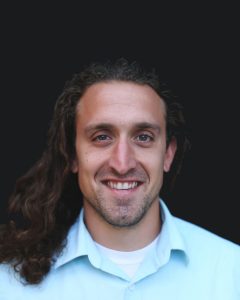 Year 2: Taught my first class with only middle school students- so that helped me understand the flaw in my thinking about students being responsible enough to execute what I simply say. I learned deeper about learning differences- wow! My thinking that it’s the responsibility of the students to execute is severely flawed. Differentiation is better for everyone but how can I provide scaffolding to those who need it and provide freedom to those who need it? It’s clear not having everyone do the same things is fair but not equal- so, I’ll be switching HW system to reflect this, not sure how test/quizzes can reflect this, projects start to reflect this. In hindsight, I didn’t have the classroom management experience (giving too much freedom) and the content structured well enough to execute it. The lack of classroom management skills significantly interfered with the impact of my teaching. Additionally, I was involved in meaningful Math discipline design work by co-teaching with Adrienne and Laurie in Algebra 1 (first 3-teacher team for math) which helped us develop a collaborative approach that allows for flexibility and consistency. This was year 1 of the OneNote class notebooks- which turned out to be significant for my practice [insert PE #1 link].
Year 2: Taught my first class with only middle school students- so that helped me understand the flaw in my thinking about students being responsible enough to execute what I simply say. I learned deeper about learning differences- wow! My thinking that it’s the responsibility of the students to execute is severely flawed. Differentiation is better for everyone but how can I provide scaffolding to those who need it and provide freedom to those who need it? It’s clear not having everyone do the same things is fair but not equal- so, I’ll be switching HW system to reflect this, not sure how test/quizzes can reflect this, projects start to reflect this. In hindsight, I didn’t have the classroom management experience (giving too much freedom) and the content structured well enough to execute it. The lack of classroom management skills significantly interfered with the impact of my teaching. Additionally, I was involved in meaningful Math discipline design work by co-teaching with Adrienne and Laurie in Algebra 1 (first 3-teacher team for math) which helped us develop a collaborative approach that allows for flexibility and consistency. This was year 1 of the OneNote class notebooks- which turned out to be significant for my practice [insert PE #1 link].
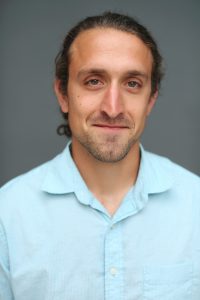 Year 3: I was able to act on ideals identified last year in a more meaningful way. Enter a greater emphasis on classroom management (like at forefront of mind), more structure in content delivery, and clearer communication of expectations. Worked with Kip on this because co-taught Geometry [insert link to Geometry Letter from PEF-5]. And I continued to refine the HW system and providing choice of problems on tests/quizzes. I have identified the dislike for math notation and how the stigma about performance interferes (and even completely prevents) student engagement with ideas. To help with this, I built better ways for students to engage with math in more interesting/non-traditional ways- like 3 Act problems, debates, the Infinity project, and the Geometry project.
Year 3: I was able to act on ideals identified last year in a more meaningful way. Enter a greater emphasis on classroom management (like at forefront of mind), more structure in content delivery, and clearer communication of expectations. Worked with Kip on this because co-taught Geometry [insert link to Geometry Letter from PEF-5]. And I continued to refine the HW system and providing choice of problems on tests/quizzes. I have identified the dislike for math notation and how the stigma about performance interferes (and even completely prevents) student engagement with ideas. To help with this, I built better ways for students to engage with math in more interesting/non-traditional ways- like 3 Act problems, debates, the Infinity project, and the Geometry project.
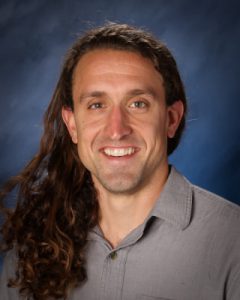 Year 4: Big shift in my expectations of myself as I undertook a significant mentoring role by co-teaching with Ted in his first year at EPS. Noticeable age gaps in classrooms this year- MS and US mixture causing lack/restricted engagement. Starting to play around with random grouping to break down social barriers [insert CC#1 link]. Through collaboration with Ted, we made a lot of progress in making content more accessible and building fun/less-traditional experiences into class consistently- estimation problems, Problem of the Week [insert DIA #3 link], and graphing stories. As well as developing a project where students track observations from their daily lives and try to fit a mathematical equation to it [insert CDD #4 link]. Similar progress was made in teaching Geometry for the fourth time. And LOVED teaching the revived Advanced Topics course! The class got students working with concepts of differential equations, linear algebra, number theory, graph theory, and game theory.
Year 4: Big shift in my expectations of myself as I undertook a significant mentoring role by co-teaching with Ted in his first year at EPS. Noticeable age gaps in classrooms this year- MS and US mixture causing lack/restricted engagement. Starting to play around with random grouping to break down social barriers [insert CC#1 link]. Through collaboration with Ted, we made a lot of progress in making content more accessible and building fun/less-traditional experiences into class consistently- estimation problems, Problem of the Week [insert DIA #3 link], and graphing stories. As well as developing a project where students track observations from their daily lives and try to fit a mathematical equation to it [insert CDD #4 link]. Similar progress was made in teaching Geometry for the fourth time. And LOVED teaching the revived Advanced Topics course! The class got students working with concepts of differential equations, linear algebra, number theory, graph theory, and game theory.
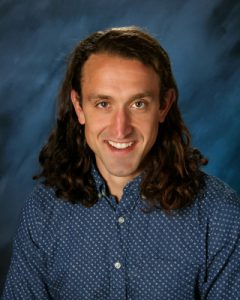 Year 5: I undertook a significant mentoring role again as we welcomed Anne to EPS. Again I feel class rosters are very divided in age- most classes having 8-10th graders so I focused a lot of effort to unite students with random groupings and work at whiteboards. I continued refining experiences that let students experience math in a way more authentic to how professionals do- creatively and collaboratively. And I feel that students are walking away feeling more confident in their abilities [insert DIA #1 link]. Collaborating with Anne was tremendous as she was essential in getting the course into a cohesive package [insert AP #3 link]. Additionally as a discipline, we attended the NCTM Regional conference. From this we presented our learnings and discipline status to the EPS Board and published an Inspire article. And Randy and I worked to lay out the scope and sequence of the entire math program 5-12.
Year 5: I undertook a significant mentoring role again as we welcomed Anne to EPS. Again I feel class rosters are very divided in age- most classes having 8-10th graders so I focused a lot of effort to unite students with random groupings and work at whiteboards. I continued refining experiences that let students experience math in a way more authentic to how professionals do- creatively and collaboratively. And I feel that students are walking away feeling more confident in their abilities [insert DIA #1 link]. Collaborating with Anne was tremendous as she was essential in getting the course into a cohesive package [insert AP #3 link]. Additionally as a discipline, we attended the NCTM Regional conference. From this we presented our learnings and discipline status to the EPS Board and published an Inspire article. And Randy and I worked to lay out the scope and sequence of the entire math program 5-12.
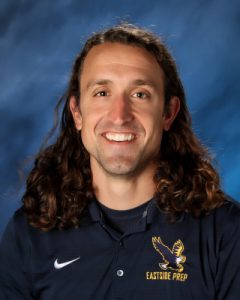 Year 6: I continued to mentor new faculty as Bert joined EPS and the Algebra 2 co-teaching team with Anne and I. The school is definitely larger- teaching in a team of three for both of my preps feels as if the work shifted into doing more negotiation and delegation work versus creation and lesson planning. Even before going remote, we were relying on much more asynchronous and digital communications. We’re delivering an Algebra 2 curriculum that significantly addresses differentiation and celebrates the uniqueness of each learner in comparison to the course just 3 years ago- but there’s still ways to improve (looking ahead to improved ALEKS implementation). And again, random grouping, whiteboards, table groups, and Problem for the Week presentations [insert link to CC #2] helped unite the classrooms.
Year 6: I continued to mentor new faculty as Bert joined EPS and the Algebra 2 co-teaching team with Anne and I. The school is definitely larger- teaching in a team of three for both of my preps feels as if the work shifted into doing more negotiation and delegation work versus creation and lesson planning. Even before going remote, we were relying on much more asynchronous and digital communications. We’re delivering an Algebra 2 curriculum that significantly addresses differentiation and celebrates the uniqueness of each learner in comparison to the course just 3 years ago- but there’s still ways to improve (looking ahead to improved ALEKS implementation). And again, random grouping, whiteboards, table groups, and Problem for the Week presentations [insert link to CC #2] helped unite the classrooms.
From being mentored to becoming a mentor, a lot has changed about how I teach math. I’ve enjoyed the evolution of my practice so far and I hope my teaching continues to improve. For how I’ll do this, I plan to focus on small and consistent incremental improvements from my own self-reflection, learning from and leaning on those who we’re surrounded by at EPS, and continued consumption of additional resources like Twitter and books. What I’d really love to do is more consistently get into colleagues classrooms and have them in mine. So if you’re reading this and are interested, consider this an invitation to setup a visit into each other’s room!